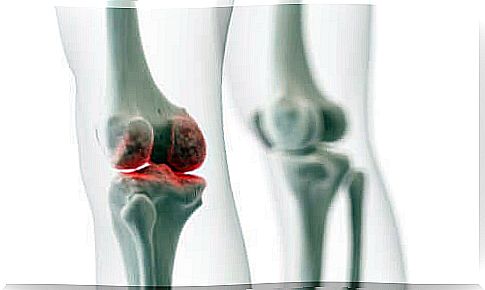What Is Congenital Insensitivity To Pain?

Pain is an unpleasant sensory experience, an alarm signal from our body to protect itself against something that is causing an injury. It is one of the fundamental survival mechanisms of our species. That’s why congenital insensitivity to pain can be so dangerous.
Congenital insensitivity to pain is a rare inherited disease. In fact, it’s a cluster of diseases called hereditary sensory autonomic neuropathies (NHSA). People who suffer from them cannot feel physical pain.
Until relatively recently, this pathology was unknown. The first time it was described was in 1932, which was a great advance because, despite having a low incidence, it is a serious disease.
The fact that someone doesn’t feel pain means they miss out on a great source of stimuli related to what happens in their body. This puts people with congenital insensitivity to pain at constant risk. In this article, we’ll explain everything about the subject.
What is congenital insensitivity to pain?
Congenital insensitivity to pain is actually a group of different diseases (hereditary autonomic sensory neuropathies). Each of them is caused by the alteration of a specific gene whose function is related to the sensation of pain. The most relevant are:
- HSAN Type I. In it, in addition to insensitivity to pain, there is also loss of thermal sensitivity. People who suffer from it tend to have problems with hearing and touch. Appears around 20 years.
- Type II. In this type, the alteration of the touch predominates, although the numbness can be partial or total.
- Type III. It usually occurs in newborns. Babies have difficulty breastfeeding, low muscle tone and are often irritable.
- Type IV. It’s the most common. This type is associated with an inability to sweat – anhidrosis. Unlike the others, the touch is preserved and changes in temperature are noticed. The biggest problem is that they cannot regulate their body temperature, so many die of fever.
All types carry the same risk. Insensitivity to pain prevents the person from knowing the seriousness of any injury that occurs to the body. It is common for them to have wounds or other pathologies without knowing it.
For example, it is quite common for these people to suffer fractures that go unnoticed. Likewise, your skin is usually quite characteristic, as it always has wounds, ulcers or scars.

How is congenital insensitivity to pain diagnosed?
As it is a rare disease, the diagnosis is complicated. The most important thing is to have a good medical review and a correct physical exam. This is especially important for babies, as they need to pay attention to certain signs.
For example, many babies have sores on their tongue or lips. Insensitivity to pain usually presents with wounds, bruises, or broken bones to which the patient has no reaction.
In addition, some additional tests may be performed to help confirm the diagnosis. First, electroneuromyography is a test that allows you to assess whether there is nerve involvement. Skin biopsies are also done.
In this last test, people with numbness usually have altered nerve endings. In fact, those with NHSA type IV will also have a change in sweat glands.
However, one of the most important aspects is the genetic study. This is usually the confirmatory test. In addition, as this is an inherited condition, it is necessary to ask about the patient’s family history.

Conclusion
Congenital insensitivity to pain is a group of different pathologies. All of them altered some gene related to the sensation of pain. Each type is accompanied by other symptoms, such as:
- anhidrosis
- pressure insensitivity
- Temperature insensitivity
This insensitivity is a great risk to life, as pain allows us to locate injuries and know when something is wrong in our body. Therefore, it is important to diagnose and guide these patients as soon as possible.









